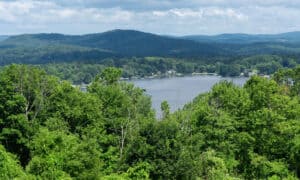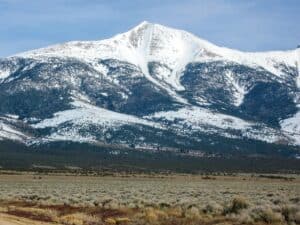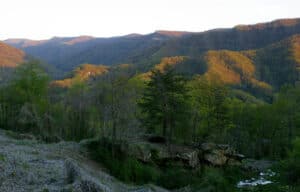Introduction
Africa is the second-largest continent in the entire world. In total, the massive area covers 11,730,000 square miles! This means that the United States could fit into Africa three times, and there would still be room left over. Because Africa is so large, the continent showcases incredible geographical diversity. Throughout Africa, deserts, forests, rivers, lakes, mountains, and much more can be found. The continent is also home to some beautiful sandy beaches and tropical areas. However, one point in Africa rises high above the rest. Keep reading to discover the highest point in Africa, Mount Kilimanjaro.
Where is the Highest Point in Africa?
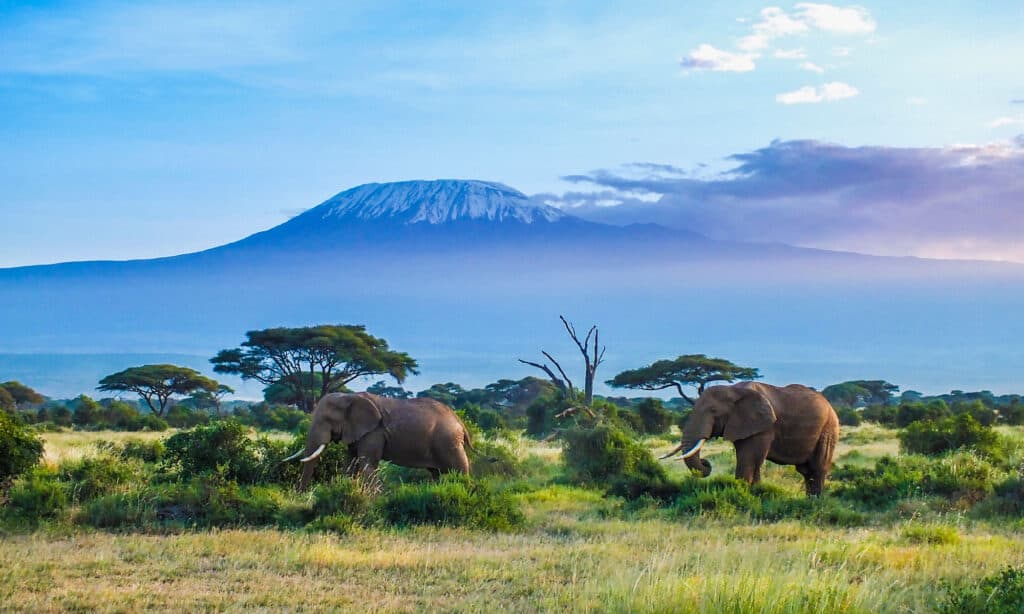
The nearest town to Kilimanjaro is almost 19 miles away, meaning that hikers and explorers are completely alone in the African wilderness when facing the summit.
©iStock.com/squashedbox
The highest point in Africa is Mount Kilimanjaro, which is located in the country of Tanzania. Tanzania sits on the eastern shore of the continent, directly below Kenya. While Kilimanjaro is technically in Tanzania, the mountain also borders Kenya and can be accessed throughout the country. However, Kilimanjaro is in a fairly remote part of Africa. The mountain is surrounded by a dense forest and desert plains. The nearest town to Kilimanjaro is almost 19 miles away, meaning that hikers and explorers are completely alone in the African wilderness when facing the summit. Since 1973, the surrounding area has been protected by the government. Kilimanjaro National Park welcomes 30,000 eager climbers each year.
How Tall is Mount Kilimanjaro?
So, exactly how tall is the highest point in Africa? The peak of Kilimanjaro reaches an impressive 19,340 feet (5,895 meters). This makes Kilimanjaro the 19th tallest mountain in the entire world. Aside from the tallest peak of the mountain, there are two others. These peaks are called Mawenzi and Shira, and the summit of the mountain is called Kibo. While Kilimanjaro may not be the tallest mountain in the world, it is the tallest free-standing mountain by far. This means that the mountain is not part of a larger range, which is very common among other peaks. For example, Mount Everest, the tallest mountain on Earth, belongs to the Himalayan Mountain Range.
History of the Highest Point in Africa
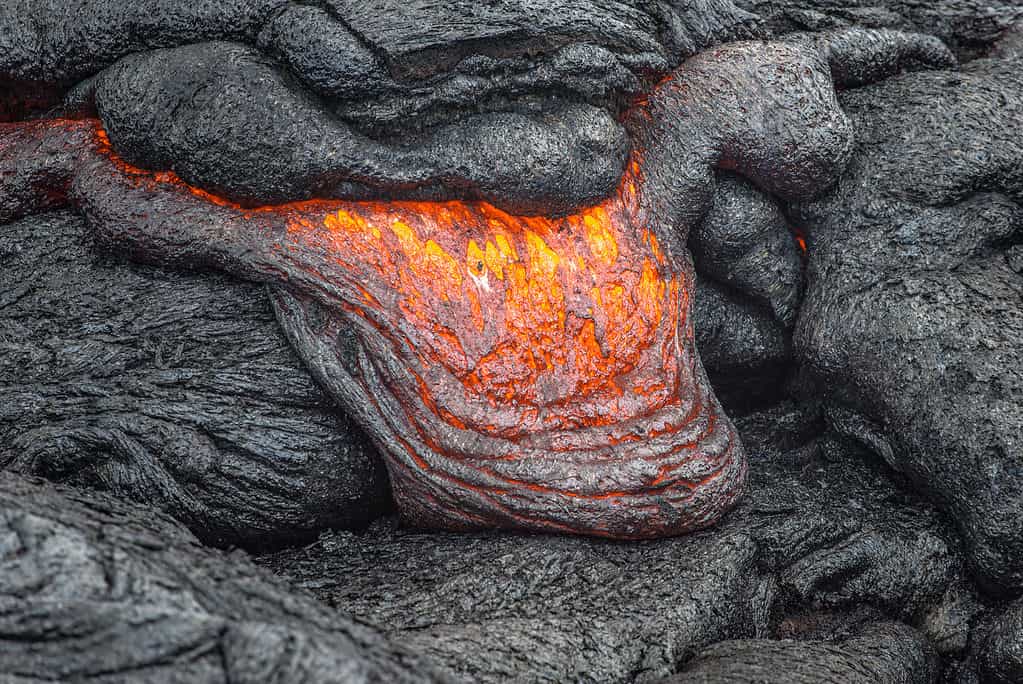
Although the two shorter peaks of Kilimanjaro have since gone extinct, Kibo, the highest point, is still an active volcano.
©Pung/Shutterstock.com
One unique aspect of Mount Kilimanjaro is that it is a volcano. Over 1,000,000 years ago, molten lava began to slip through the cracks in the earth’s crust, slowly forming the foundation of Kilimanjaro. As time passed, these eruptions grew larger and more intense. Thicker, stronger lava began hardening at Kilimanjaro’s site, gradually building up to the height that the mountain rests at today. Although the two shorter peaks of Kilimanjaro have since gone extinct, Kibo, the highest point, is still an active volcano. This may be deceiving due to the beautiful layer of snow that rests on the top of the mountain. However, scientists agree that it is only a matter of time before Kibo erupts again.
Signs of life near Kilimanjaro appear in the form of stone bowls and tools. Historians believe that Kilimanjaro provided an ideal environment for hunter-gatherer groups millions of years ago. The mountain also appears in the writings of a Graeco-Roman polymath who lived during the first century A.D. This suggests that Kilimanjaro played an important role in the lives of both Arab and Chinese traders throughout history.
Native tribes also settled near Kilimanjaro. Records suggest that the Wachagga people lived on and around the mountain some 400 years ago. The tribe worshipped the mountain, basing many of its religious beliefs on the natural beauty and wonder of the area. Eventually, several tribes joined together to form the Chagga people. This tribe continued to grow and is still one of the most powerful and influential groups in all of Tanzania. While the tribe no longer lives on the mountain, remnants of the ancient civilization can still be found.
Climbing the Highest Point in Africa
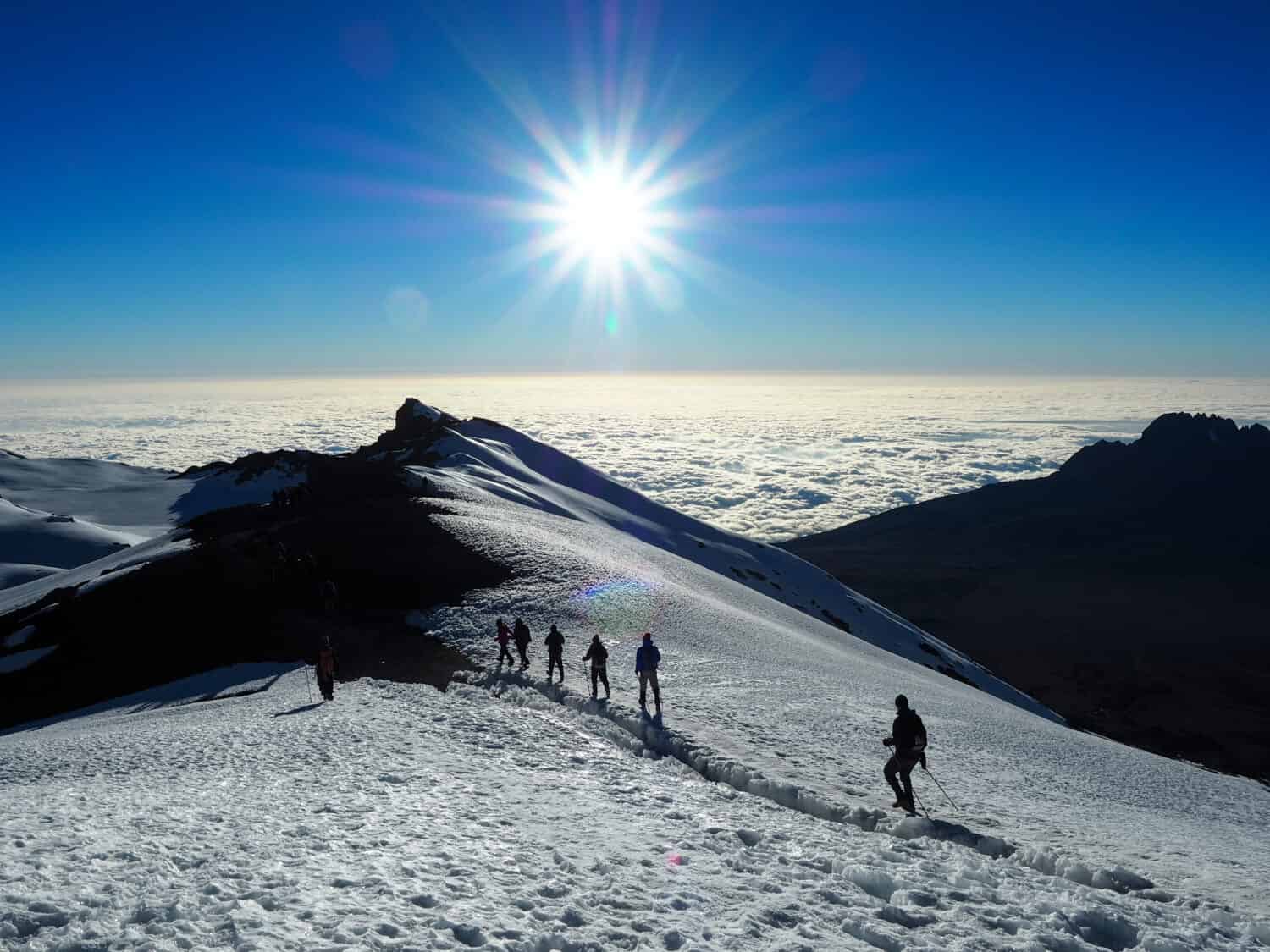
It takes between five and nine days to climb Kilimanjaro, which requires intense determination, stamina, and willpower.
©TristanBalme/Shutterstock.com
The first attempted climb to the Kibo summit of Kilimanjaro did not occur until 1889. A German geographer named Hans Meyer and an Austrian named Ludwig Purtscheller became the first individuals to reach the top. Since then, many people have traveled to Tanzania to reach the top of the highest point in Africa. However, this feat is much easier said than done. Although climbing the mountain does not require any extreme technical skills, reaching the summit can be incredibly dangerous. Potential hazards include hypothermia, altitude sickness, falling rocks, and unpredictable weather. It takes between five and nine days to climb Kilimanjaro, which requires intense determination, stamina, and willpower. However, once climbers reach the top, the view and sense of accomplishment are worth the long and difficult journey.
Mount Kilimanjaro Interesting Facts
- Mount Kilimanjaro is a part of the Seven Summits, which refers to the highest peak on each of Earth’s seven continents. Kilimanjaro is considered the easiest to climb out of the Seven Summits. This is because reaching the top can be accomplished without the use of climbing gear.
- Although Mount Kilimanjaro may be the “easiest” of the Seven Summits, this does not mean that it has a high success rate. Only about 45 percent of climbers who attempt to hike Kilimanjaro make it to the mountain’s summit.
- Kilimanjaro is home to a flower that grows nowhere else in the entire world! The flower is called the Kilimanjaro impatiens and has bright pink petals surrounded by pointed green leaves.
- Because the mountain is so high, Kilimanjaro hosts five climate zones! These zones gradually grow colder as the elevation increases and oxygen levels in the atmosphere decrease.
- Climbing Kilimanjaro may be difficult, but that doesn’t mean it is impossible. In fact, 89-year-old Anne Lorimor became the oldest person in history to reach the summit in July of 2019.
Wildlife Near the Highest Point in Africa
Because the area surrounding Kilimanjaro is protected by the government, wild animals are free to roam about as they please. This freedom creates an incredibly biologically diverse ecosystem with many different species. Here are just a few of the animals that can be found on and around Mount Kilimanjaro.
Blue Monkey
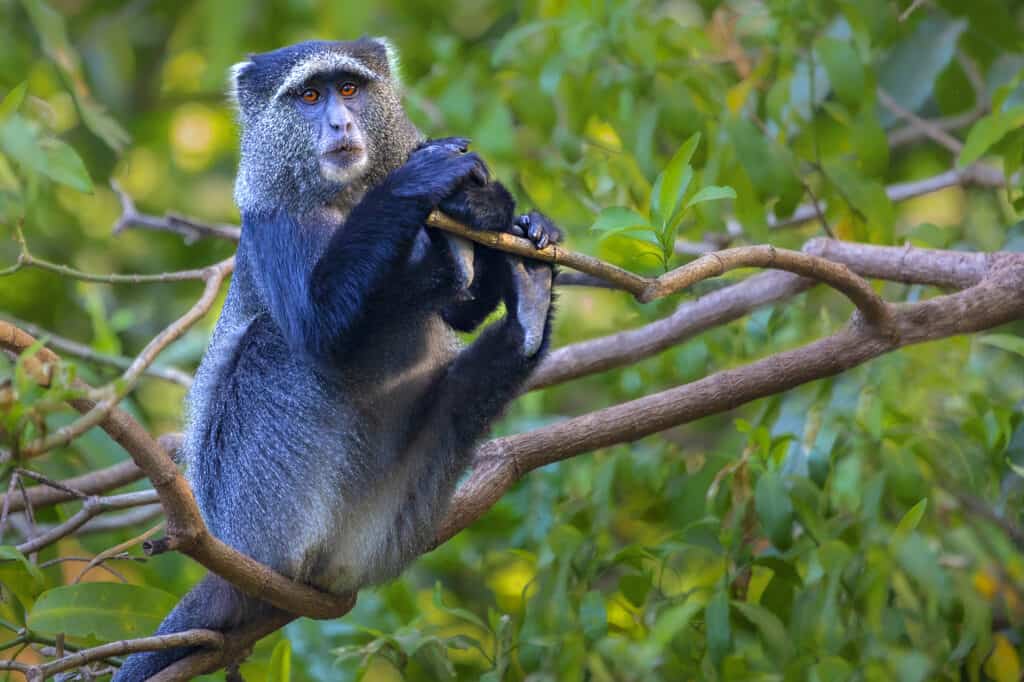
Blue monkeys reside in the forests that surround Kilimanjaro and spend most of their lives up in the trees.
©iStock.com/Ozbalci
Although they are called blue monkeys, these mammals typically have more grey coloring. Blue monkeys reside in the forests that surround Kilimanjaro and spend most of their lives up in the trees. These creatures can reach a weight of up to 18 pounds and usually measure around two feet in length. They live for around 20 years in the wild, surviving off of a diet that mainly consists of fruits and leaves.
Aardvark
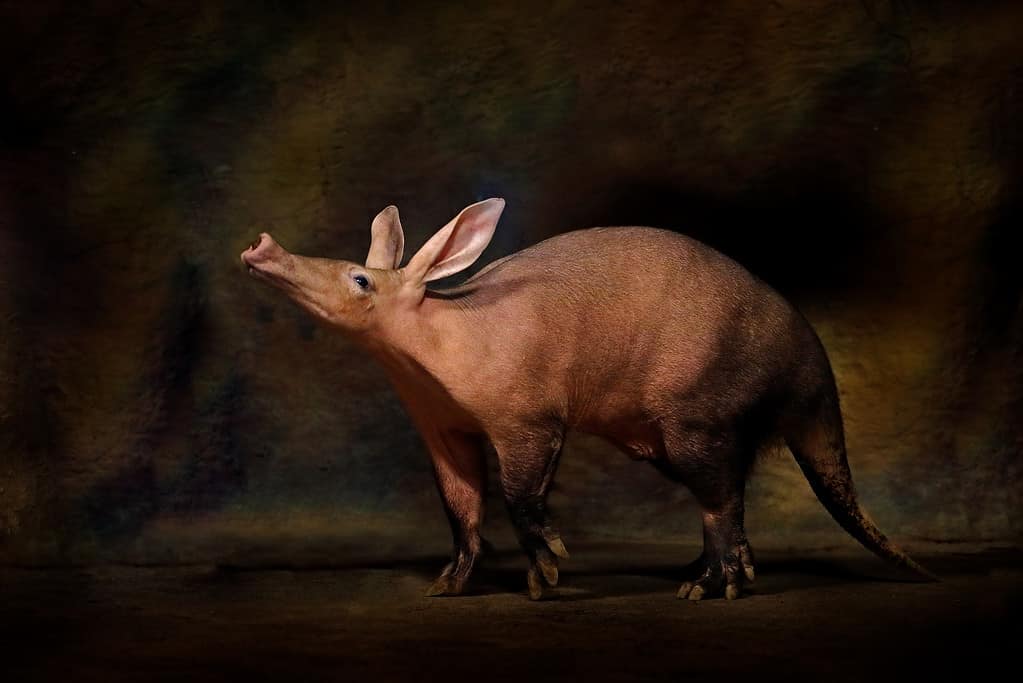
Because aardvarks spend most of their time underground and only come out at night, they are seldom spotted by humans.
©Ondrej Prosicky/Shutterstock.com
Aardvarks are incredibly interesting-looking creatures. Their name means “earth pig” in the Afrikaans language. This is due to their long snouts and relatively hairless bodies. These mammals can live for up to 23 years, surviving off of a diet of insects. Aardvarks weigh between 110 to 180 pounds and measure around four feet in length. Because these creatures spend most of their time underground and only come out at night, they are seldom spotted by humans. Their thick, pinkish skin also allows them to blend in with the desert surroundings they typically inhabit, hiding them from predators and other potential threats.
The photo featured at the top of this post is © iStock.com/HPS-Digitalstudio
Thank you for reading! Have some feedback for us? Contact the AZ Animals editorial team.



